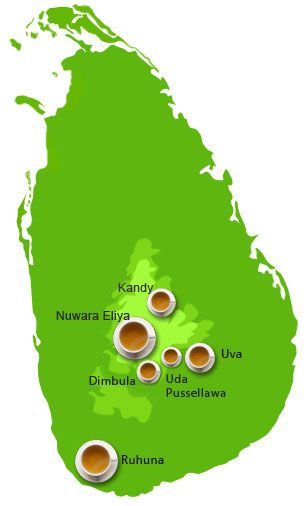All About Ceylon Tea
The Story of Ceylon Tea
For centuries, Ceylon tea has been known as the finest tea around the world. Tea was first introduced to Sri Lanka by James Taylor in 1867, and the rest, as they say, is history! Ceylon tea consists primarily of black tea, however green tea and other types of tea are also grown. Although Sri Lanka is a comparatively small country, it has a wide range in elevation, which results in the flavours of tea being produced varying greatly depending on the part of the country they originate from. The main differences in flavour are a result of the climate, soil, sun, precipitation, and plant varietals. Although there are regional nuances, Ceylon tea is classically known for bold, full and brisk flavour. A majority of Ceylon tea is picked by hand, which makes it a brisk and bright tea. There are three main main types of Ceylon tea:
- The first, and most popular is the black Ceylon tea, and also the most complicated. The complication arises from the fact that the stem and leaves of the tea plant are used when making black tea. Authentic black Ceylon tea is made using aged stems and fermented leaves.
- The second type, Ceylon green tea avoids the fermentation process. This ensures the tea leaf remains green and gives the brewed cup of tea a yellowish-green colour. The tea leaves are either pan-fried or steamed right after the rolling process to stop further fermentation.
- Thirdly, and finally, we have Ceylon White tea also known as ‘Silver Tips’. Only the ‘bud’ is handpicked and sun-dried. A special clone of the Camelia Sinensis plant is used to pluck these silver tips which are longer and bolder than usual buds. Silver tips are known to carry the most amount of health benefits as it is the least processed tea.
,
The Lion Logo – Symbol Of Quality
The Ceylon Tea Symbol of Quality, better known as the Lion Logo, is a stamp of approval that certifies tea manufacturers to be meeting the high standards set by the Ceylon Tea Board of Sri Lanka. The Logo is owned by the Sri Lanka Tea Board and globally trademarked. The presence of the Lion Logo on your pack of Basilur tea is a guarantee that you are drinking a cup of 100% Pure Ceylon Tea packed in Sri Lanka.
The Sri Lanka Tea Board has a special Tea Tasting unit that is in charge of the Lion Logo. This unit is responsible together with the analytical laboratory for assessing the quality of Ceylon Tea prior to the auction and export. In order for a tea manufacturer to be able to use the Lion logo they should not just meet specific legal requirements but should also pass strict quality tests and standards. The unit’s stamp of approval is essential for any tea, packed or branded in Sri Lanka, that carries the Lion Logo.
The presence of the Lion Logo on every pack of Basilur Tea guarantees that;
– The pack contains 100% pure Ceylon Tea.
– The tea is packed in Sri Lanka. Overseas Importers and packers are not allowed to use the Lion Logo on their tea packs even if the packs contain pure Ceylon Tea.
– Basilur meets the strict quality standards set out by the Sri Lanka Tea Board.

There are five regions of Ceylon tea.
1.Kandy
2.Dimbula
3.Nuwara Eliya
4.Uva
5.Ruhuna


Grown in the ancient city of Kandy, the cultural capital of Sri Lanka, this mid-country tea provides a one of a kind appealing flavour. A dark golden liquor with full bodied strong characters, Kandy teas are grown at 2,000 – 4,000 feet above sea level. A tea which can be enjoyed with a touch of cream and sweetener as a relaxing all day beverage.